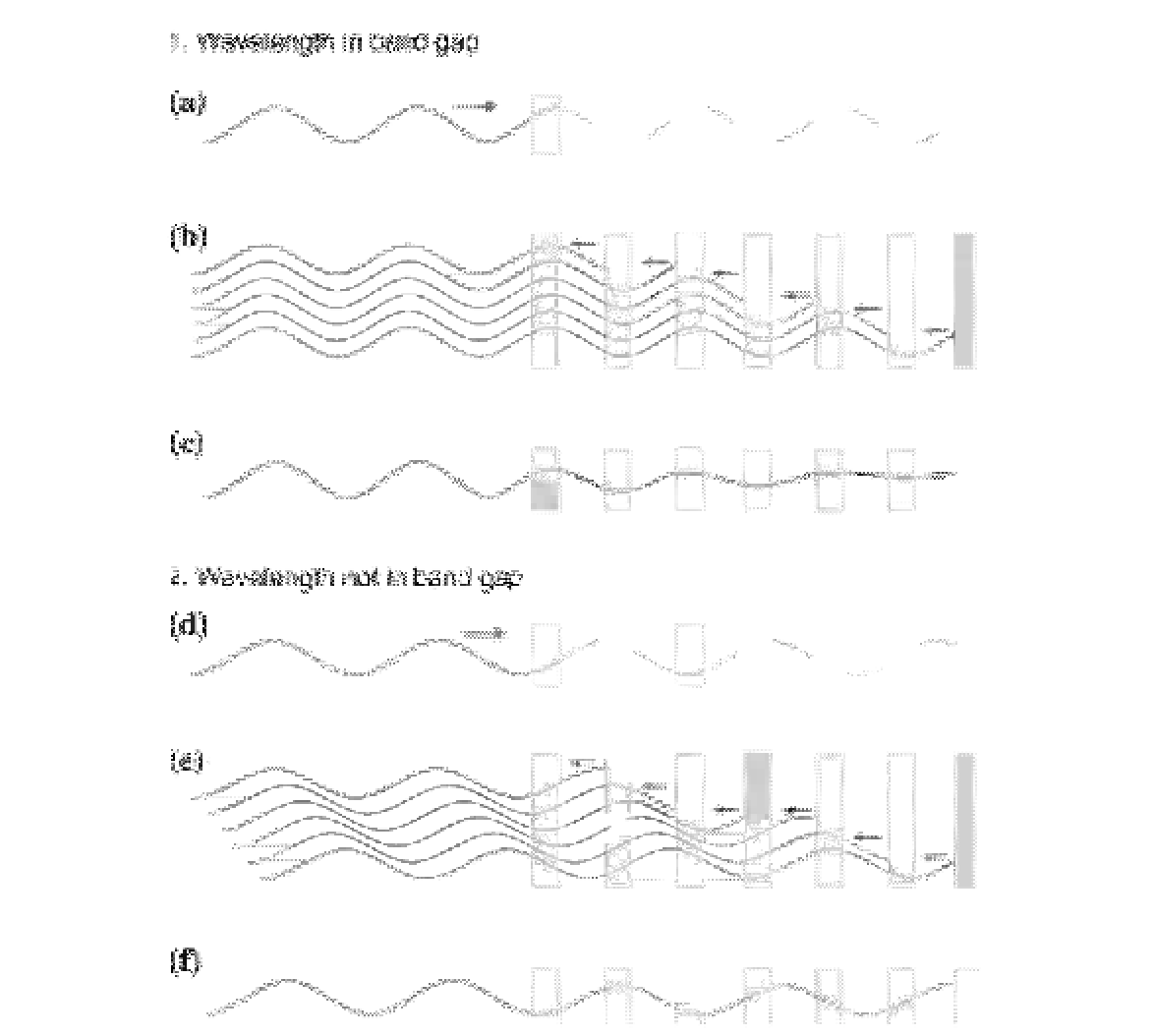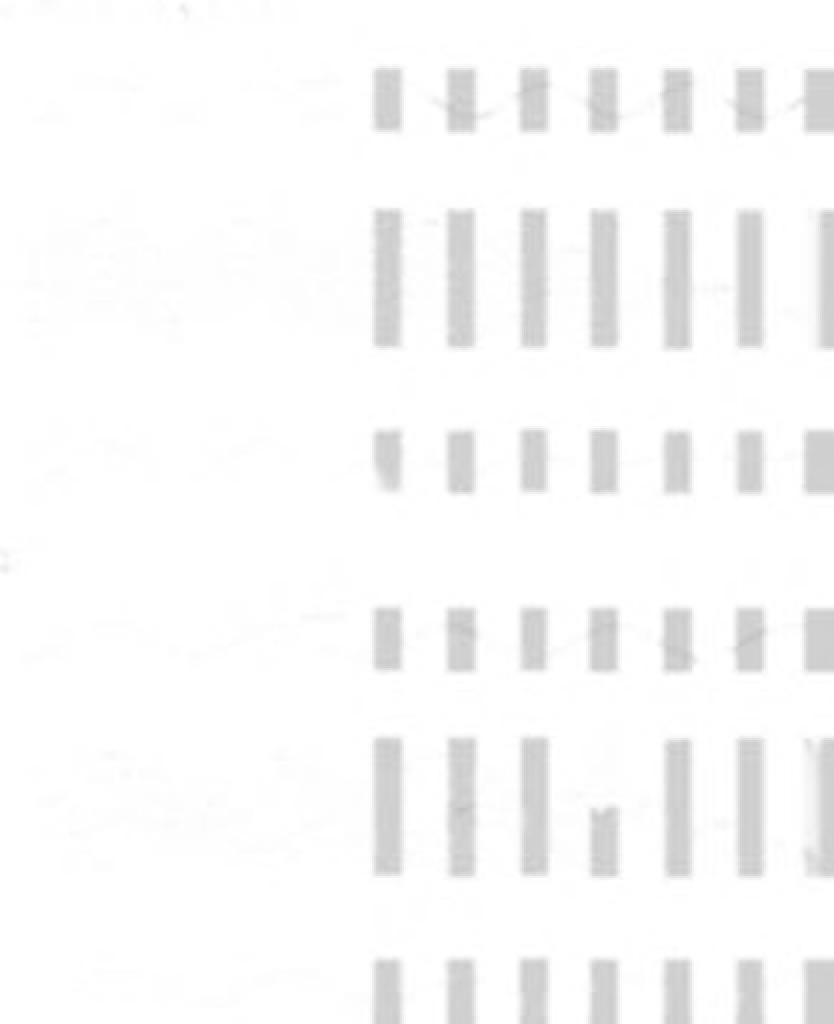Biomedical Engineering Reference
In-Depth Information
FIGURE 14.9
Schematic depiction of light interacting with a one-dimensional photonic crystal given as a periodic array
of dielectric slabs (gray rectangles) surrounded by air. The two cases shown are for light with wavelengths inside (a-c) and
outside (d-f) of the photonic band gap. (a) Incident wave with wavelength inside band gap. (b) Reflected waves are all in
phase and reinforce each other. (c) Reflected waves and incident wave produce a standing wave that does not propagate
through the photonic crystal. (d) Incident wave with wavelength outside band gap. (b) Reflected waves are out of phase
and cancel each other. (c) Forward-traveling wave propagates through the photonic crystal with only slightly reduced
intensity. Adapted from Ref.
44
.
should be as spherical as possible)
[45]
. This lat-
ter requirement makes face-centered-cubic lat-
tices particularly interesting candidates for
three-dimensional photonic crystals; indeed,
modeling
calculations show that diamond-based lattice
geometries are the “champion” structures
[48]
.
With this guidance, photonic crystals with com-
plete band gaps in the infrared and microwave
regimes have been successfully fabricated by a
and
photonic
band
structure


